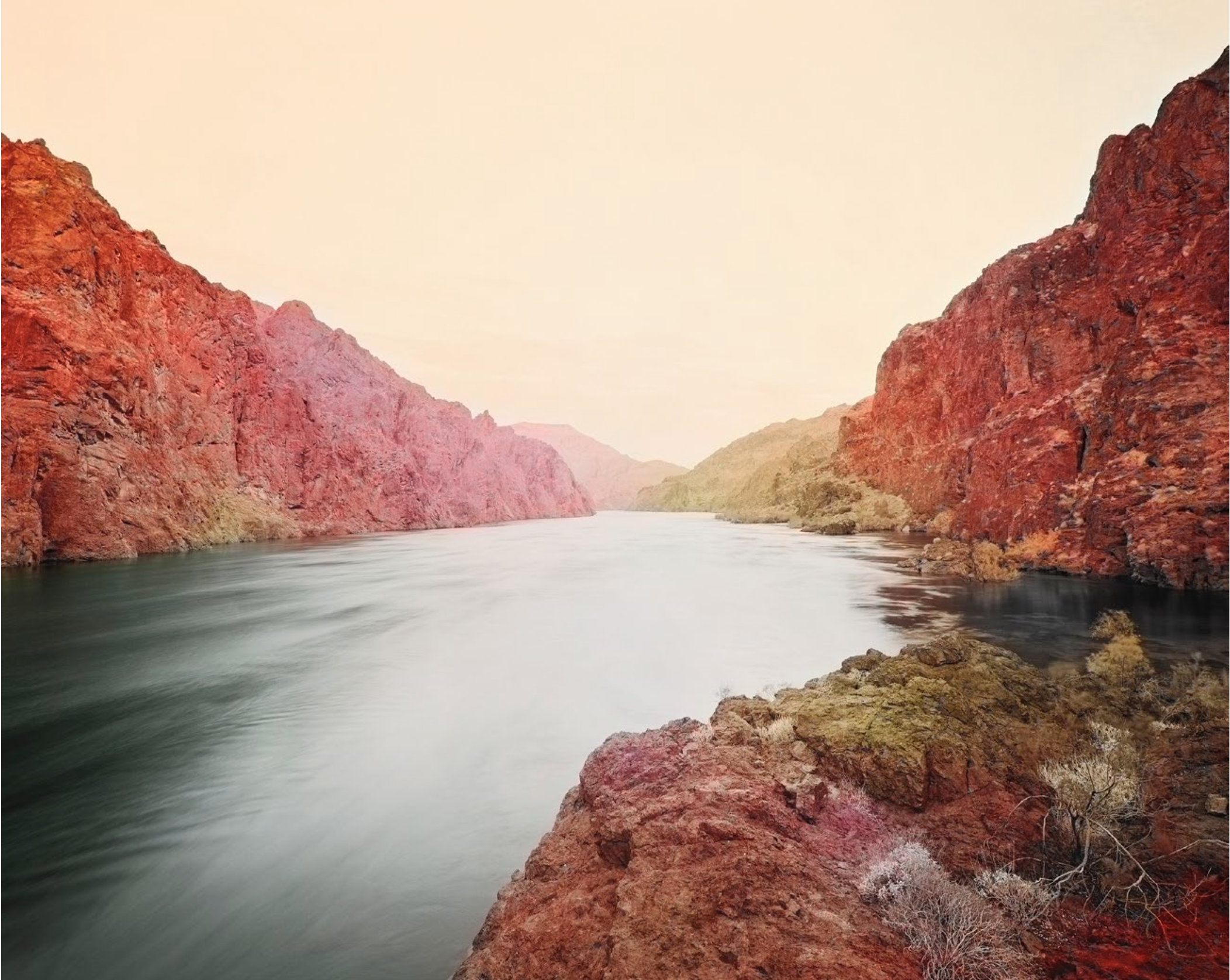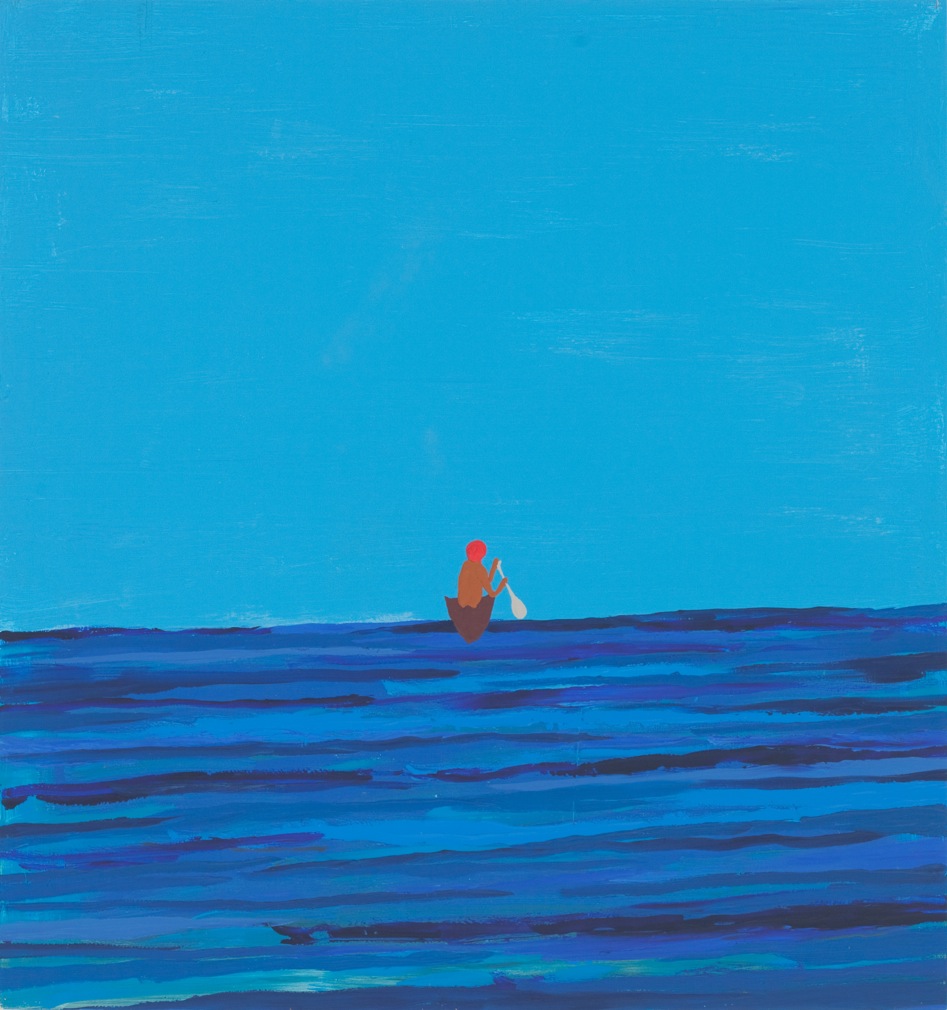The Crime of Art
2017 - Film & Video (Film & Video)
2:32 minutes (looped)
Kota Ezawa
The Crime of Art is an animation by Kota Ezawa that appropriates scenes from various popular Hollywood films featuring the theft of artworks: a Monet painting in The Thomas Crown Affair (1999), a Rembrandt in Entrapment (1999), a Cellini in How to Steal a Million (1966), and an emerald encrusted dagger in Topkapi (1964). Ezawa uses his signature cartoon-like style to remix and reenact these crime scenes, leaving only the artworks as “real” objects (as they are depicted in the films), rather than illustrating them. Reversing fiction and reality in an unexpected way, this gesture invites the viewer to question the reliability of the visual footage. Ezawa describes his artistic oeuvre as “a form of image theft” and focuses on appropriation and mediation of images through his works. Borrowing scenes from Hollywood films, The Crime of Art is in line with the tendency of the artist to copy and to manipulate imagery that belongs to popular culture. By focusing on stolen art, Ezawa rethinks the conceptual underpinnings of his work in relation to the dilemma of theft and ownership. These become urgent questions at a time when the manipulation of digital images is a part of our daily lives, blurring the line between real and fake. Through this work, the artist also questions the fragile nature of the museums that “own” objects with major cultural significance—whether looted, exchanged, bought, or donated from other cultures and geographies—many of these objects carry with them problematic histories.
Kota Ezawa borrows images from the news, art history, and pop culture and turns them into cartoon-like stories. He produces flat and two-dimensional imagery via his light-boxes, works on paper, and animations. These works are often inspired by important moments in history, such as the assassinations of John F. Kennedy and Abraham Lincoln, the O.J. Simpson trial, and media coverage of former National Football League (NFL) player Colin Kaepernick kneeling during the national anthem as a symbol of protest. Ezawa’s animations, which he describes as “moving paintings,” make use of a labor-intensive technique that requires the artist to recreate each frame with close attention, producing hundreds of illustrations via digital drawing and animation software. He is best known for a signature style that embraces vibrant colors and simple forms, stripping detail from images to leave only essential attributes and environments. This reductive technique does not diminish the power of the image, as it turns to the familiar historical or cultural context to fill any gaps left by the artist’s erasures. However, the gesture also invites viewers to think about how these erasures might destabilize the reliability of public memories, highlighting the faulty process of collective remembering and what it tends to overlook.
Colors:
Related artist(s) to: Kota Ezawa » Leslie Shows, » Trevor Paglen, » Amy Franceschini, » Andrea Higgins, » Chris Johanson, » Colter Jacobsen, » Desirée Holman, » John Bankston, » Jordan Kantor, » Josephine Taylor

© » KADIST
Leslie Shows
Human Quarry is a large work on paper by Leslie Shows made of a combination of acrylic paint and collage...

© » KADIST
Jordan Kantor
2009Eclipse is a series of screenprints from Jordan Kantor’s larger vitrine installation that included reworkings of a single image of a small group viewing an eclipse through shielding cut-outs...

© » KADIST
Desiree Holman
2010Reborn, 2010 is a three-channel video by Desiree Holman that questions ideas of motherhood and the maternal instinct...

© » KADIST
Trevor Paglen
2017Trevor Paglen’s ongoing research focuses on artificial intelligence and machine vision, i.e...

© » KADIST
Colter Jacobsen
2007Victory at Sea is a simple mechanism made from cardboard and found materials that mimics the Phenakistoscope, an early cinematic apparatus...

© » KADIST
Colter Jacobsen
2010The title Untitled Passport II was first used by Felix Gonzalez-Torres in an unlimited edition of small booklets, each containing sequenced photographs of a soaring bird against an open sky...

© » KADIST
Jordan Kantor
2008Lens Flare and the series Untitled Basel Lens Flare (6168, 5950, 7497) were part of a solo project by the artist presented at ArtBasel in 2009...

© » KADIST
Jordan Kantor
2009Lens Flare and the series Untitled Basel Lens Flare (6168, 5950, 7497) were part of a solo project by the artist presented at ArtBasel in 2009...

© » KADIST
Trevor Paglen
2020Half Dome Hough Transform by Trevor Paglen merges traditional American landscape photography (sometimes referred as ‘frontier photography’ for sites located in the American West) with artificial intelligence and other technological advances such as computer vision...

© » KADIST
Chris Johanson
2000Apartment on Cardboard (2000) is an exterior view of an abstracted apartment building...

© » KADIST
Chris Johanson
2004Chris Johanson’s paintings, sculptures, and installations break down everyday scenes and commonplace dramas into colorful forms; the darkest sides of humanity are invoked with humor...

© » KADIST
Trevor Paglen
2020The Black Canyon Deep Semantic Image Segments by Trevor Paglen merges traditional American landscape photography (sometimes referred as ‘frontier photography’ for sites located in the American West) with artificial intelligence and other technological advances such as computer vision...

© » KADIST
Chris Johanson
2010Chris Johanson’s Untitled (Painting of a Man Leaving in Boat) (2010) pictures a canoe drifting toward an off-kilter horizon line, which demarcates the cobalt sea from the cerulean sky...

